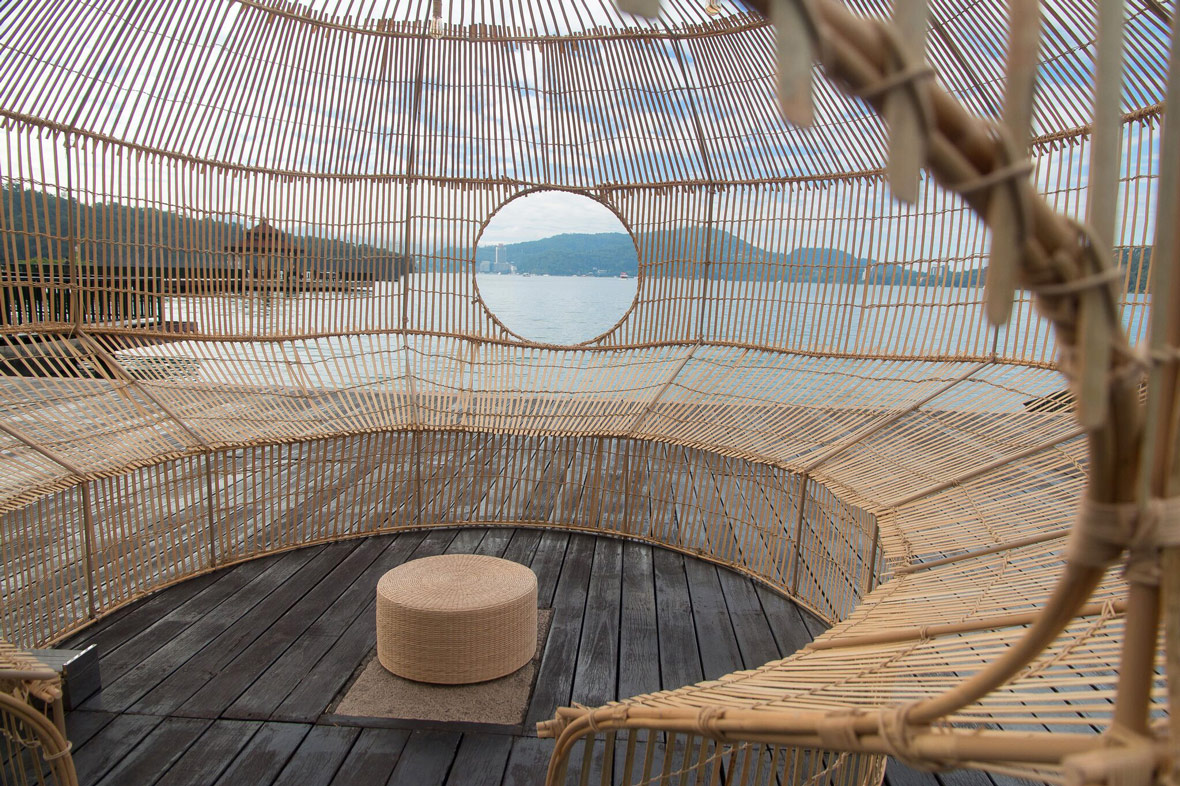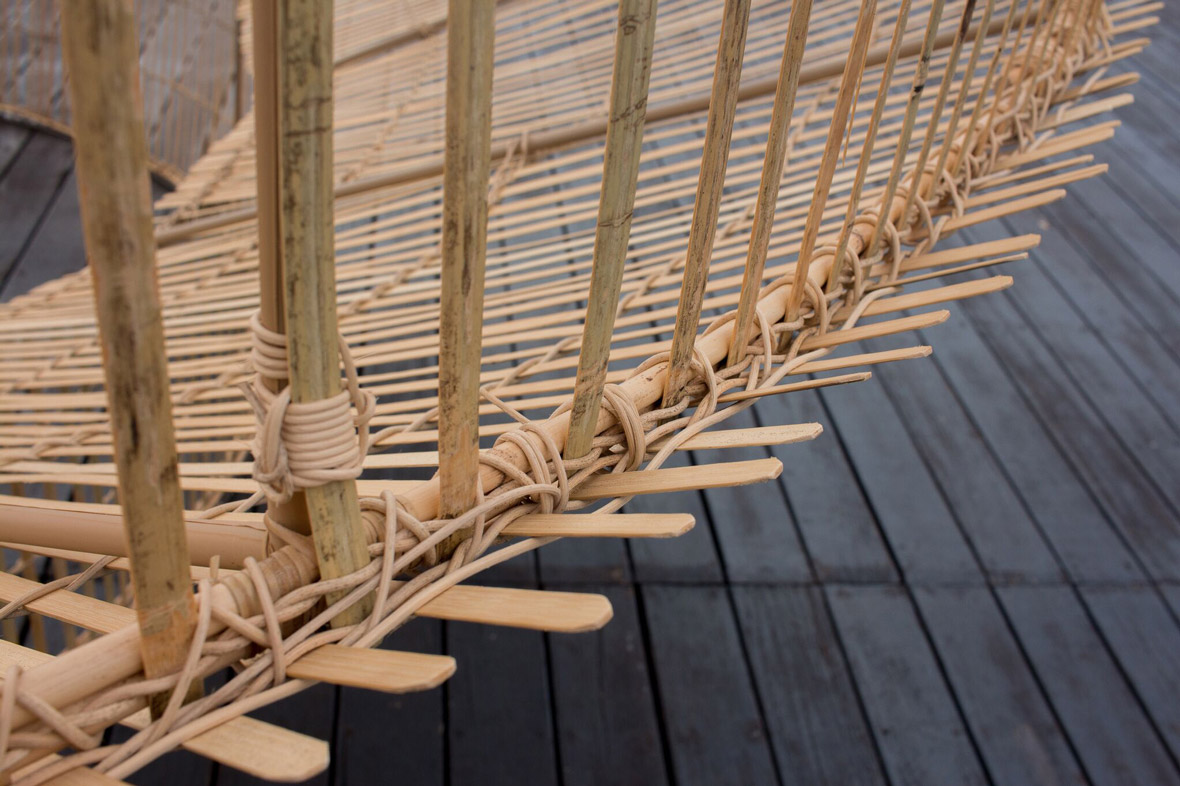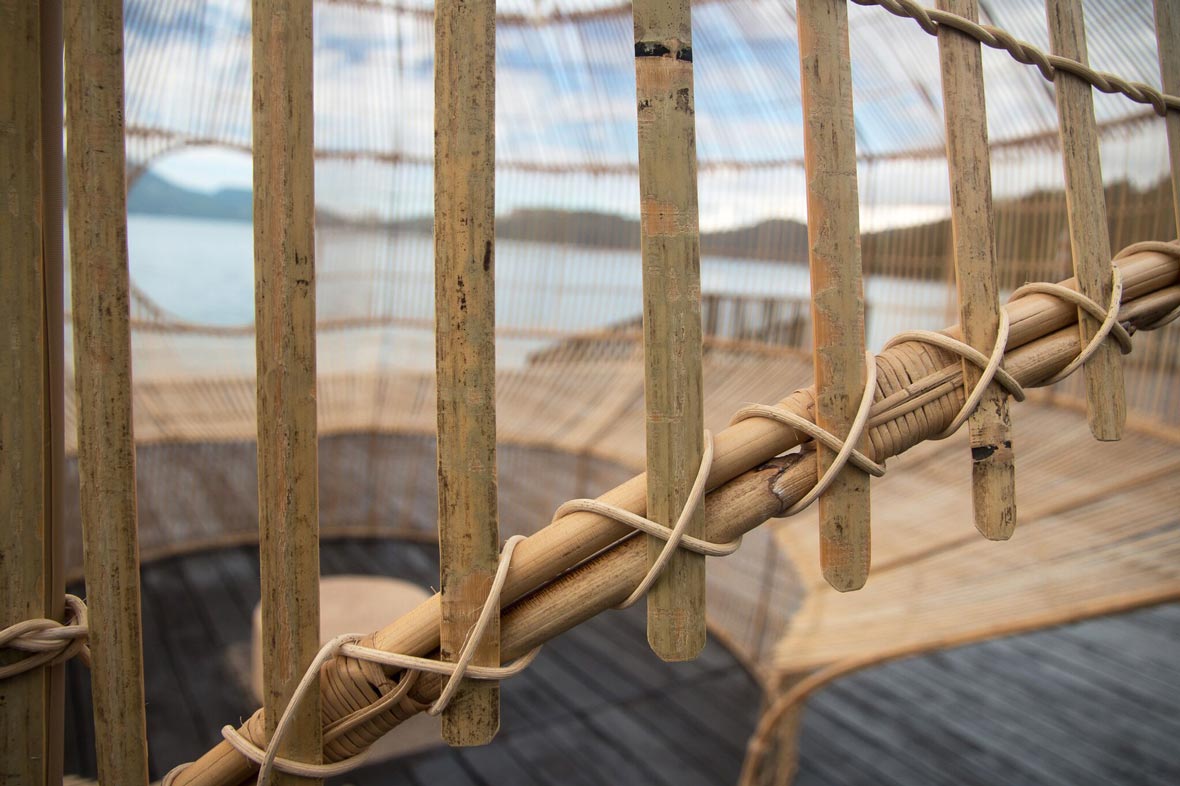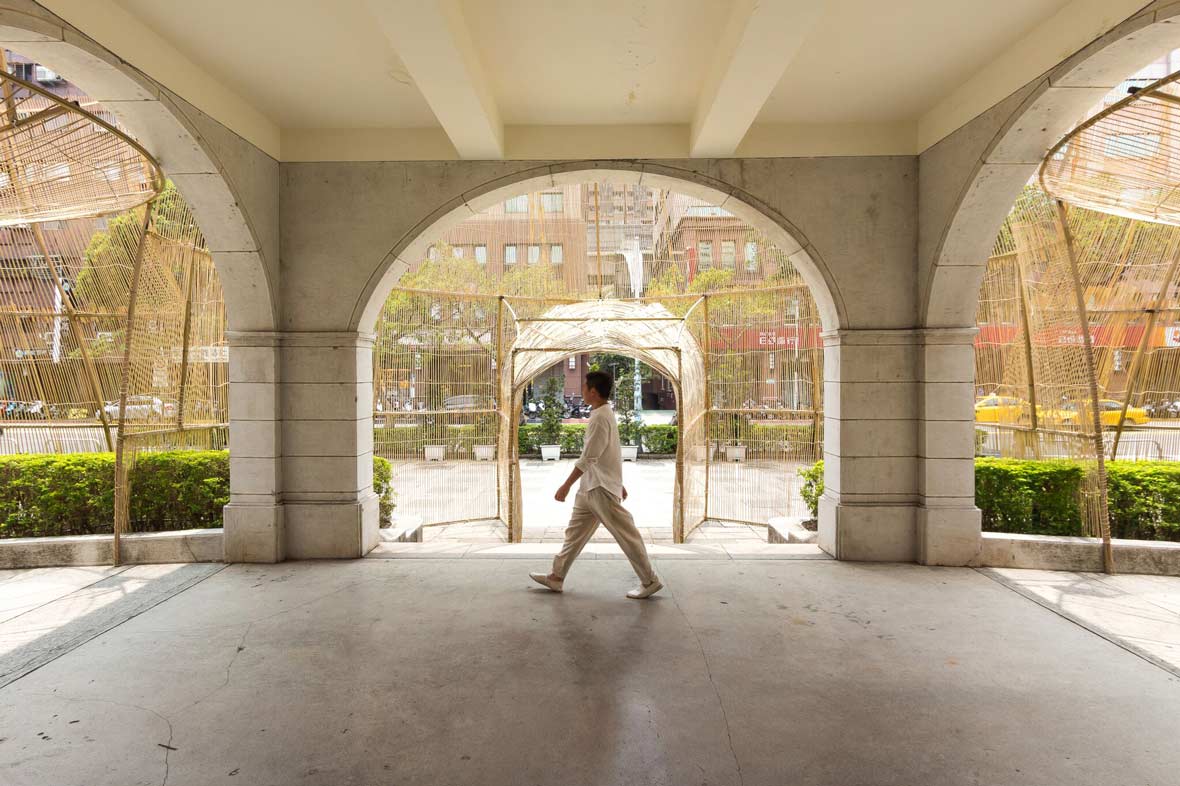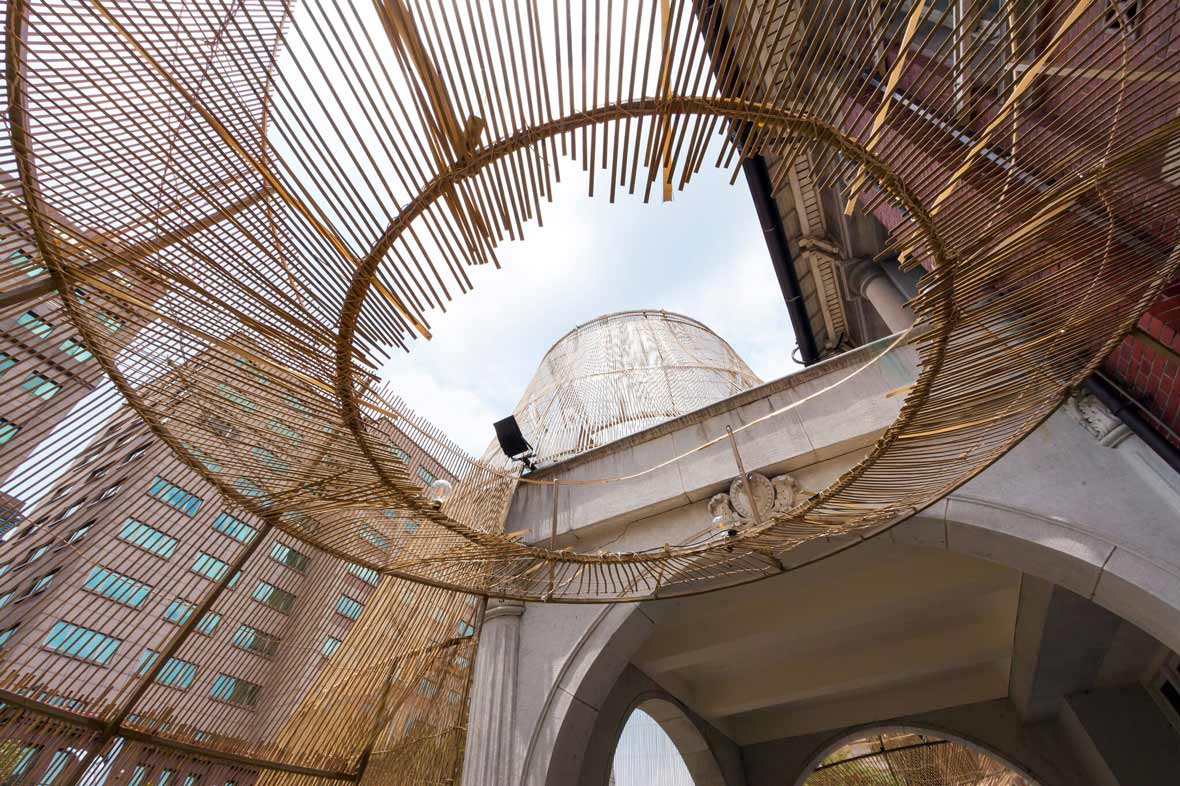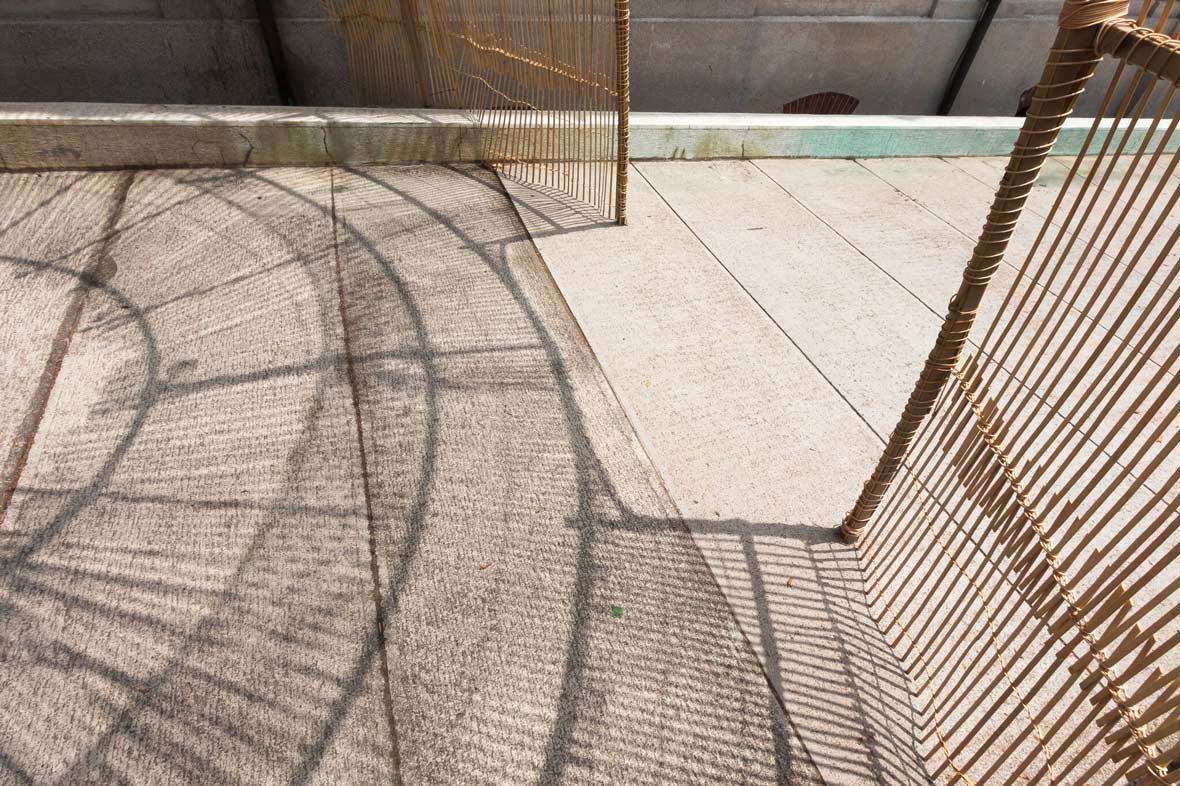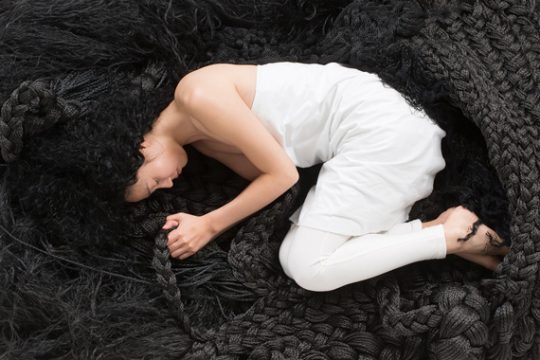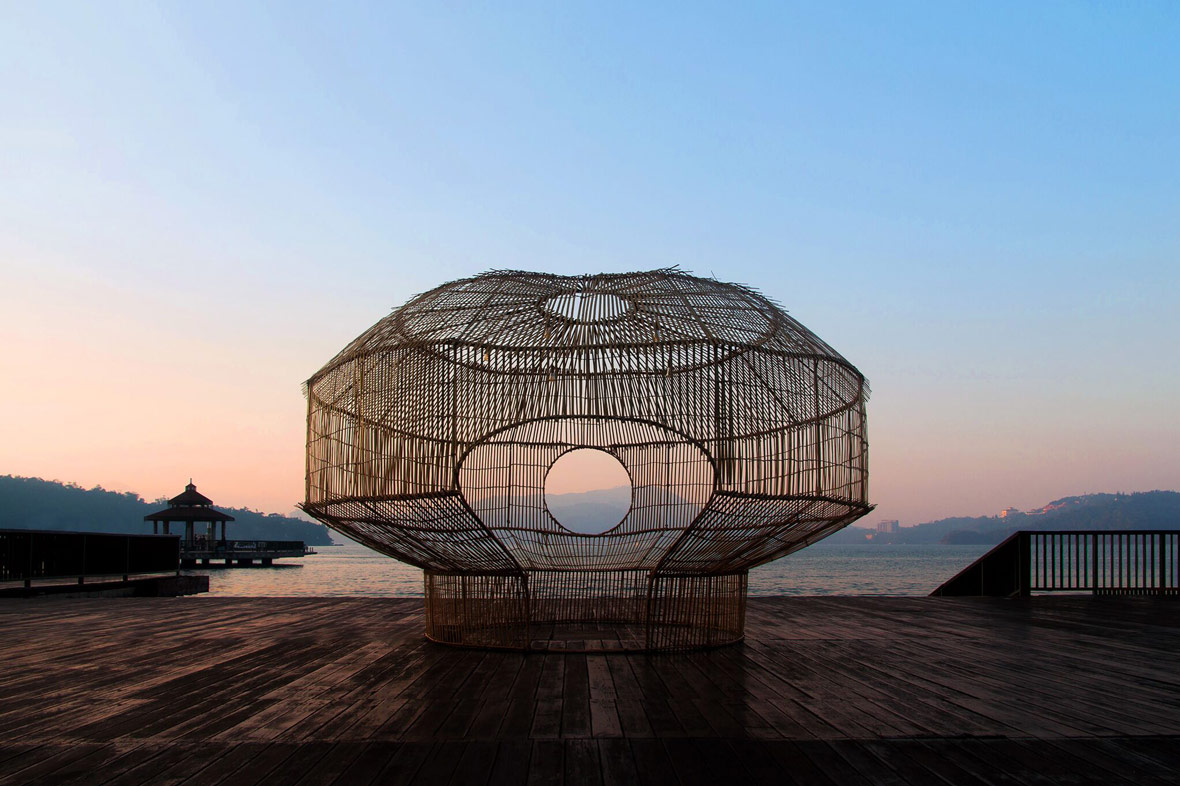
When does a craft become art? For Feng Cheng-Tsung, whose bamboo-and-rattan sculptures draw on a tradition of Taiwanese handicrafts, the line between the two is unclear. In last year’s Fish Trap House, he used techniques learned from the Thao people of central Taiwan to create an installation piece that seems to float above the shoreline of Sun Moon Lake. This summer he’s erected a similar handmade structure outside Taipei’s Museum of Contemporary Art, which will be on display until July 22. In both installations, Feng breathes new life into a traditional handicraft, creating airy structures with a singular beauty.
工艺何时才能成为艺术?艺术家范承宗运用台湾传统工艺创作出竹藤雕塑,对他而言,工艺和艺术两者的分野并不明显。他在去年的《筌屋》里向台湾中部的邵族部落取经,创作出看似漂浮于日月潭湖岸的装置艺术作品。今年夏天,他在台北当代艺术馆外面架起一件类似的手工装置,该件作品将会展示到 7 月 22 日。艺术家在这两件装置作品,创造出如空气般轻盈的结构,呈现独特美感,替传统工艺带来新气象。
When he was commissioned to create an installation on the shore of Sun Moon Lake, Feng had no clear idea of what he would make. His sole requirement was that the piece reflect the local culture, so he and his team toured the area and met with nearby indigenous communities. “I saw the Thao people’s fish traps and thought they were very beautiful,” he says. They met an elder from the Ita Thao tribe, the last of his people who could still make such basket-like traps, and he taught them his technique. “Later we analyzed the fish-trap making process and transformed it into a large-scale installation piece. I invited 20-odd tourists at Sun Moon Lake to make it with us,” he recalls. “The elder came, too, and was happy to see everyone eagerly learning the craft he’d preserved.”
当范承宗接到委托要替日月潭创作地景装置的当下,他并不知道自己要做些什么,日月潭风景管理处只告诉他希望创作能反映当地文化。因此他和团队探访当地,并和在地原住民部落族人见面。“我看到邵族人渔筌,觉得很美。” 他们见了伊达邵部落的一位长者,他是部落里最后一位懂得制作渔筌的人。这位长老亲自教授范承宗和他的团队这项技艺。他回忆道,“之后,我们将渔筌的制作过程分析,转换成一件大型装置艺术,邀请了二十几位到日月潭的游客一起制作。长老也来了,看到大家开心的在学习他保留下工艺,他很是欣慰。”
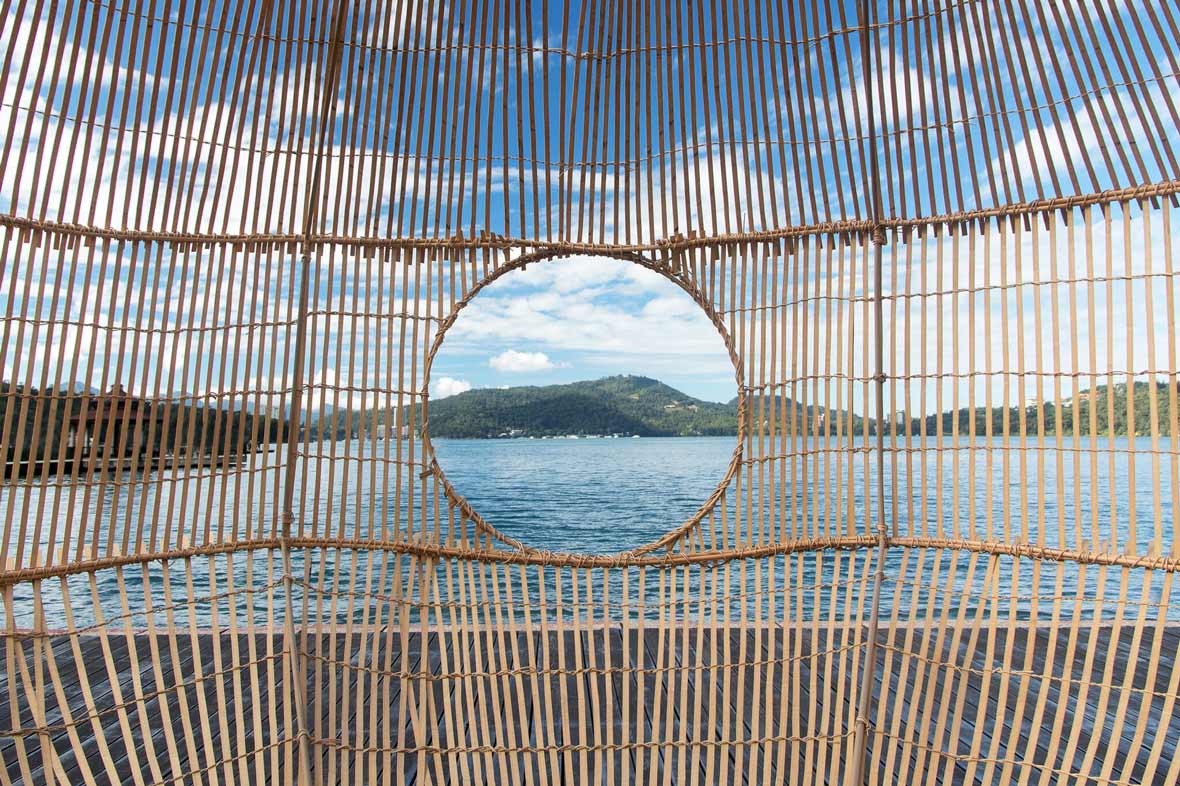
The sculpture has two window-like holes: one at the top and one looking out over the lake. “When people enter, they can look through the window and see the scene we framed, which is one of the most beautiful views over the lake,” Feng explains. “There are no built structures like restaurants, hotels, or high rises—it looks just as Sun Moon Lake did long ago.” Feng will be returning later this year to create another installation piece—this time one that floats on the water’s surface.
这件地景雕塑有两个像窗户的圆洞,一个在头顶,另一个则望向湖面。“人们走进去之后能透过圆洞看见我们框起的最美的一块小小的景色。” 范承宗解释道。“画面里没有任何饭店旅馆大楼之类的人造物,就像很久很久以前的日月潭吧。” 艺术家今年也会在这创作另一件装置作品,只是这次的作品将会漂浮在湖面上。
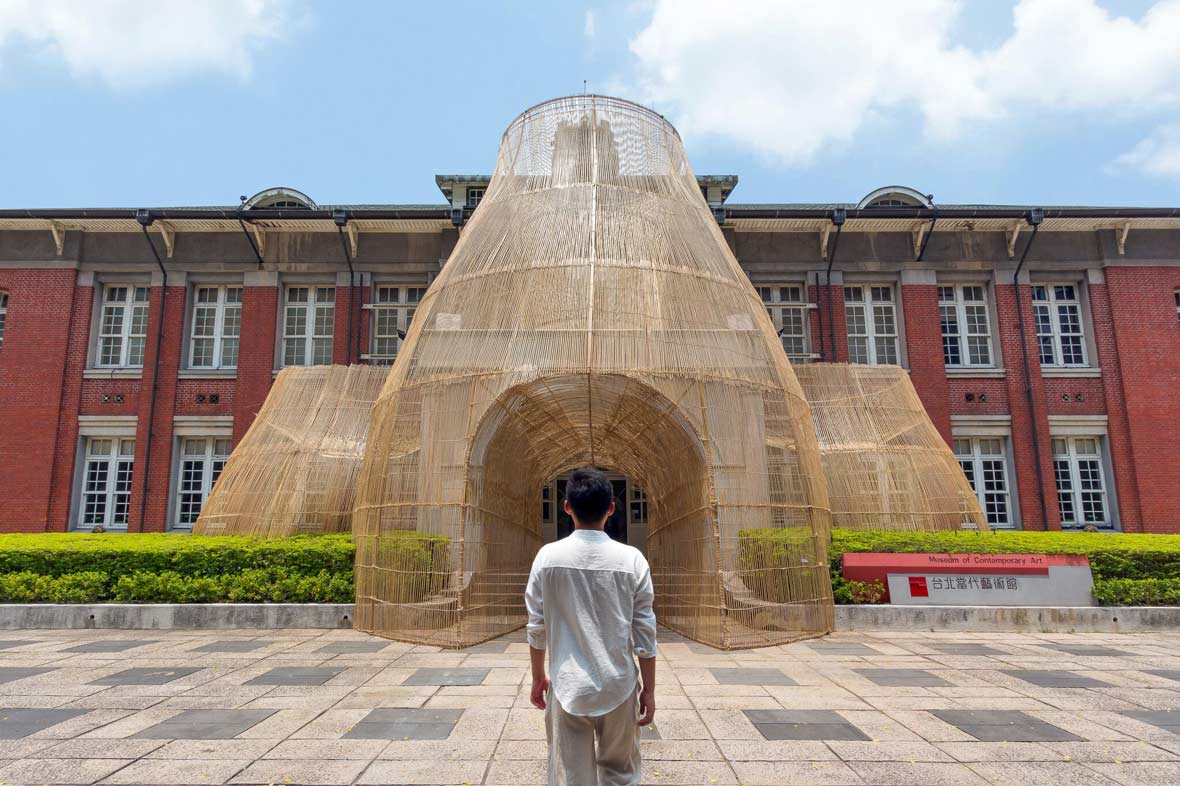
Taipei’s Museum of Contemporary Art provides a very different setting for Feng’s sculpture, titled “Trap.” Rather than framing a natural lakeside landscape, it sits next to a solid brick structure, offering a sort of frail monument to impermanence. And rather than enclosing visitors in an intimate space, it rises above them in a vault. The work highlights traditional crafts by taking them out of context, placing them in dialogue with a neoclassical building that’s less than a century old. Light and translucent against the museum’s red brick, Feng’s “Trap” makes a striking contrast.
台北当代艺术馆则提供给范承宗的竹编雕塑另一种不同的环境。这件名为《筌》的作品,这次不再框住湖边自然风景,而是座落于坚固的红砖建筑旁,给了这件作品某种脆弱、易逝感。跟日月潭的《筌屋》不同,当代艺术馆的《筌》不把参观者关在一个私密空间,而是像一座拱顶罩住他们。这件作品使传统工艺离开原本的脉络,让它和不到一百年的新古典风格建筑产生对话,借此彰显这项工艺。当代艺术馆的红砖立面更加凸显这件作品的轻巧和通透性。
Feng’s studio, Studio Kao Gong Ji, is named after a fifth-century BCE text documenting how various tools were made. (The Kao Gong Ji is known in English as the “Artificer’s Record.”) “It contains a line that I think is a wonderful explanation of what craftsmanship is,” says Feng. “‘A favorable heaven, an auspicious earth, beautiful materials, skilled craft: combine these four and you can achieve quality.’” He explains: “The line says that a good object contains its age, its environment, its local roots, and an awareness and grasp of beauty.”
Feng is guided by this ethos of grounding creative work in a specific time and place. The results are works of art—or craft—that draw their beauty from a painstaking, thoughtful creation process. His current project is a four-part exhibition on the food, handicrafts, farming practices, and daily life of the people in and around Taitung.
范承宗将工作室取名为考工记工作室。《考工记》写于春秋战国时期,是一本记载如何制作各式工具的古书。“里头有写到段我认为对工艺很棒的诠释。” 艺术家说。“天有时,地有气,材有美,工有巧。合此四者,然后可以为良。” 他解释说,“这段话在说一个好的物件,包含了时代、环境、自然风土以及对材料美感的觉察与掌握。”
范承宗以这段话为准则,根据不同时节和环境进行创作。而他创作出的艺术品,也可称做工艺品,因为创作过程经过仔细思量而产生美感。艺术家目前正进行四项展览计划,主题关于食物、手工艺品、农耕习俗和台东人的日常生活。
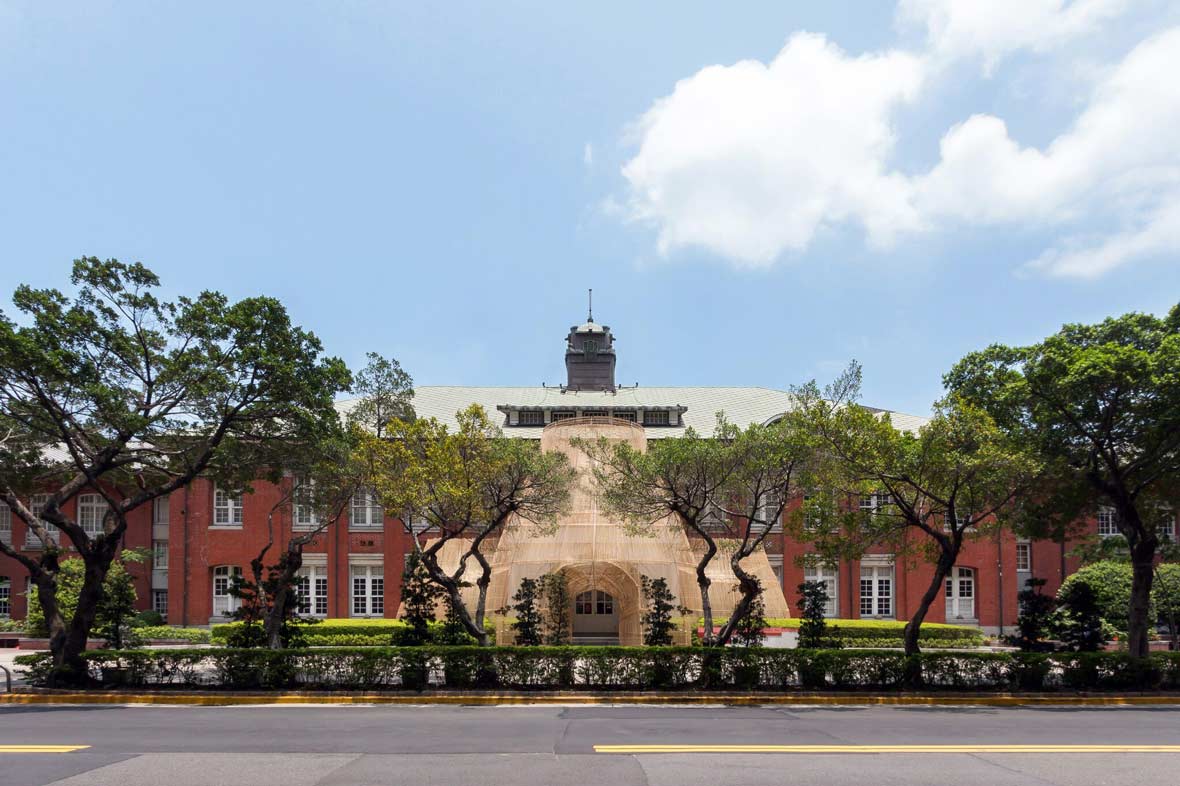
“For me, the borders between art and craft—or design as well—are blurry and hard to distinguish clearly,” says Feng. Within those borders, though, he notes that each has different strengths. From design, he’s learned the value of planning and an analytical mindset, and from art, he’s learned the value of openness and abstraction. Yet craft occupies a central place in his work. “Personally, I think craftsmanship definitely needs to involve attention to materials and to production process and methods. If a piece doesn’t have this, I have a hard time calling it craft.”
By that definition, Feng’s fish traps are certainly examples of “craft,” but they’re also works of art. He transforms traditional practices into something beyond tradition, structures that catch the visitor in a moment of wonder.
“艺术和工艺,或者再加上设计,对我来说的边界是模糊而难以清楚分割的。” 范承宗说。在这些边界里,他发现每个领域都有不同的力量。他从设计里学到规划和分析性思考的重要性,从艺术里学到开放和抽象的价值。然而,工艺是他的创作核心。“我个人认为,工艺其不可或缺的部分,正是对材料和制作过程和方法的关系,若一件作品少了这部分,我就比较难以将它和工艺做联想。”
根据这样的定义,范承宗的渔筌无疑是工艺品,而且也是一件艺术品。他让传统技艺超越了本身的传统意涵,而转换成能够让参观者惊叹不已的装置作品。



